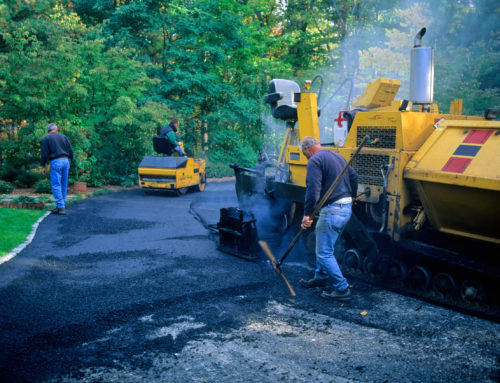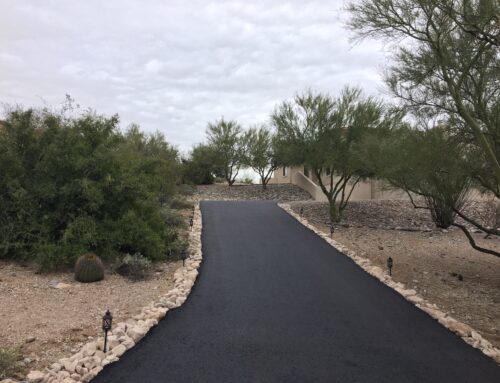Last month on the blog we talked about fog seals and how they can extend the life of a road. In that discussion, we mentioned the pavement condition index or PCI. This time on the Sunrise Asphalt blog we’re going to talk all about the PCI, how it started, how it’s measured, and what affects it.
What is the Pavement Condition Index
The pavement condition index (PCI) is a number between 0 and 100 that’s used to tell the general, well, condition of that patch of pavement. 0 is bad, 100 is perfect. It’s like getting your homework back in school!
The PCI is used in civil engineering and asset management as well as by local governments to determine several things including their infrastructure and service needed/being provided.
Who Created the PCI
The PCI was created at first, as so many things are, by the United States Army Corps of Engineers! It was developed originally as an airfield rating system – a necessary stat when you’re taking off and landing multimillion-dollar machinery! No potholes there, no sir!
Later it was modified and standardized for roadway asphalt pavements by the American Society for Testing and Materials. The ASTM is an international standards organization that develops and publishes technical standards for a huge range of products, systems, services, and materials just like asphalt.
So they set the standards – how do they measure it?
How to Measure the the PCI
PCI is measured based on a visual survey of the pavement, tracking the types and number of distresses on it. A distress is a type of flaw, more about those in a minute. After the types and numbers are accounted for, ‘distress density’ is calculated for each type of flaw. Then there’s a whole secret formula that results in a number between 0 and 100.
Alright, so, those distresses! Here’s what counts as a distress for calculating the PCI:
- Alligator cracking
- Bleeding
- Block cracking
- Bumps and sags
- Corrugations
- Depressions
- Edge cracking
- Joint reflections
- Lane/shoulder drop-off
- Longitudinal and transverse cracking
- Low ride quality
- Patching and utility cut patching
- Polished aggregate
- Potholes
- Rutting
- Shoving
- Slippage cracking
- Swelling
- Weathering and raveling
Now these distresses can be caused by any number of things, as we often discuss. It could be anything from a flaw in the construction of the asphalt in the first place up to the continued heavy use of heavy duty (and heavy weight) machinery on top of the asphalt and everything in between. The important thing is to know when these flaws and distresses are too much and the road needs work. More on that in a beat.
If it’s a small area of pavement being measured the entire network of asphalt may be surveyed while larger pavement networks might receive random surveying or specific samples. There’s a whole process for selecting those sections and samples and we don’t need to get into all that. Suffice to say the ASTM has that all figured out.
Alright let’s take a look at the scale and how those numbers break down!
PCI Range and Class Chart
| PCI RANGE | CLASS |
| 85 -100 | Good |
| 75-85 | Satisfactory |
| 55-70 | Fair |
| 40-55 | Poor |
| 25-40 | Very Poor |
| 10-25 | Serious |
| 0-10 | Failed |
At what point should you repair the asphalt? Anything below 55 means that the surface is in rough shape and getting to it sooner than later will only help. It might be too late for a simple mill and overlay or crack fill repair, but averting further deterioration and potential damages caused from a failed road should be priority number one.
Does your PCI look like it’s sub-40? Have an asphalt repair job that needs professional attention? Look no further. Here at Sunrise Asphalt, we’ve been paving the way for Tucson for over 40 years!
Give us a call or fill out our form for a free estimate on your asphalt job.
No matter the job, the owner is always on site – guaranteeing the highest quality work!



